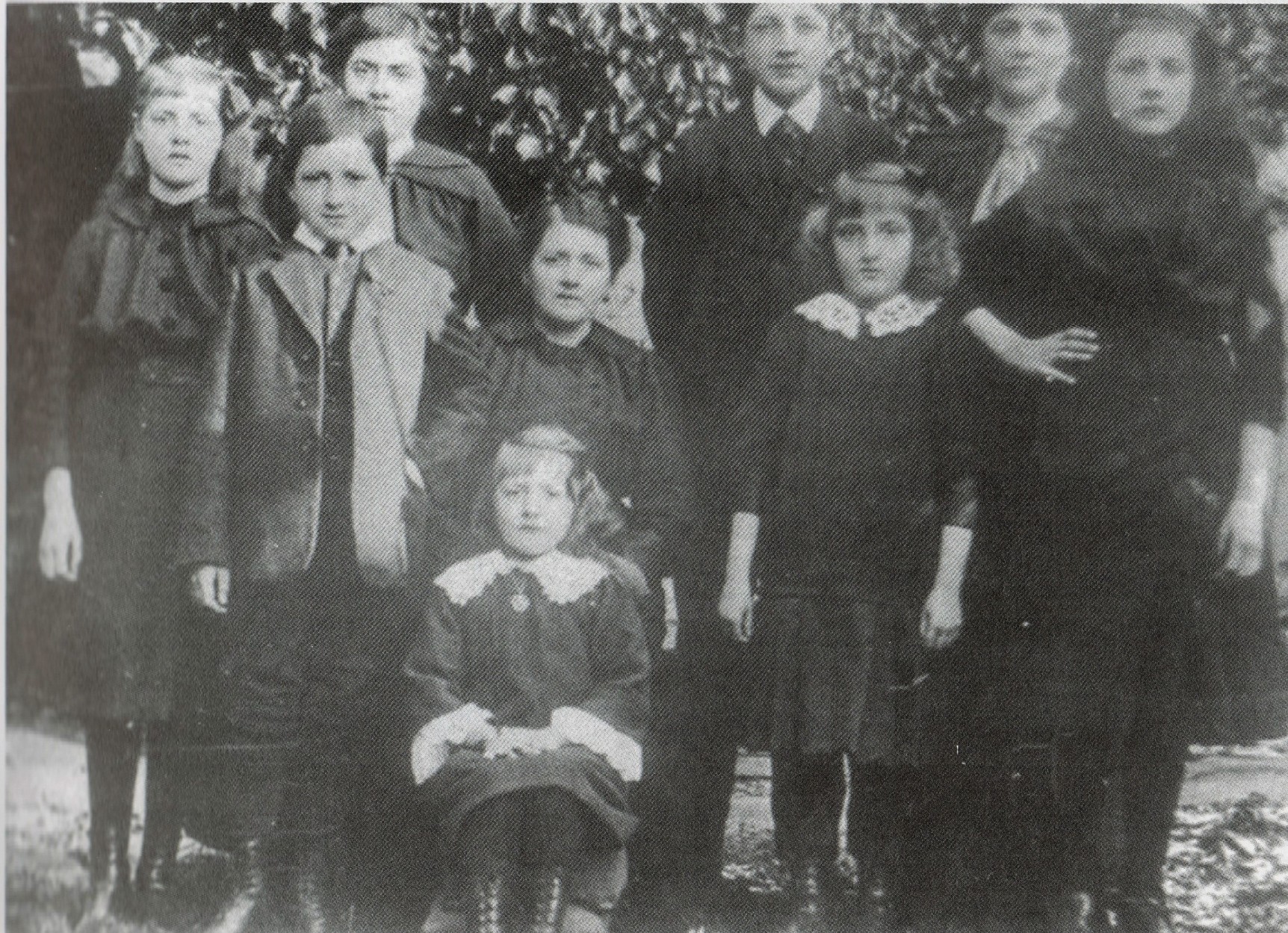
The German invasion through Belgium at the outset of WW1, as part of the infamous Shleiffen plan, resulted in the inevitable refugees. Of these refugees it is estimated that about 250,000 would end up spread throughout the British Isles. One of these families would arrive at Hawes station and take up residence in nearby Gayle: the family Marlein.
Charles Marlein was from Ostend and was a sailor on the mail steam ships that crossed the channel between Ostend and Dover. During his spare time in Ostend he led an accordion band and would even entertain the passengers who travelled on the ships. As war gripped Belgium the family travelled to the safety of England. Charles, his wife Natalie and children Emmerance, Margaret, Elvier, Madeleine, Theophiel (Phil) and Francis eventually settled in Gayle. Their eldest son, Auguste, was fighting in the Belgium Army and would later die for his country.
The family was billeted at Clint’s House, Gayle. The local people rallied round to support them by supplying them with furniture, bedding, crockery and the like. It was a kindness they never forgot. Two of their daughters found work with a local tailor called Martland. Sadly, their youngest son Francis died from tuberculosis and was buried at Hawes.
In early 1919 the Marlein family returned to Belgium but Phil could not settle. He returned to the Dales and worked for a farmer at Swathgill Farm. He married a local girl and settled in Gayle where Phil worked delivering animal meal to local farmers. Their children, Charles, Elvier and Madeleine were born at Gayle.
Interestingly, when Belgium was occupied by the Germans in 1940, Phil’s sister Madaleine and her family once again ended up as refugees and arrived back in Gayle. Her husband would join the British Army whilst Phil became a sergeant in the Hawes Home Front.
The Marlein family were not unique in being housed in the Yorkshire Dales. A family called Vander Bosch had also settled in Gayle, while Adolf and Clemence Schaepherders and their family settled at Castle Bolton. Little is known though of their stories.
Explore more memories from the ribbon
-
William Whitesmith Constantine
William was born in Middlesbrough on the 26th March 1887. He was the son of Joseph and Maria Constantine of Harlesly Hall Northallerton. He was one of five offspring, having 2 sisters and 2 brothers. His father ran a shipping company which he had started in 1885 and would last until it was sold off in 1960. At the outbreak of WW1 the company had 28 vessels, 22 being ocean going and 6 coastal. During the war 13 of the company vessels and 32 crewmen would perish. William was gazetted into the Yorkshire Regiment as a 2nd Lieutenant in March 1906, promoted to Lieutenant 27th May 1907, and to Captain 5th October 1913. He served in France with the 4th Battalion. He suffered gassing at Ypres on the 24th May 1915 and was wounded on the Somme on the 15th September 1916. In 1916 he was awarded the Military Cross for ‘conspicuous gallantry in action’ which was cited in the London Gazette on the 14th November 1916. He had been promoted to Major on the 13th June 1916. On the 2nd May 1918 he was posted to The 2nd Battalion the Yorkshire Regiment, then in August to the 9th Battalion the King’s Own Yorkshire Light Infantry. The family were associated with Constantine College in Middlesbrough having donated £40,000 towards the building cost. The college opened in 1930. William died on the 11th November 1970 and was buried at the Church of St. Oswald, East Harlsey where he had been Churchwarden…
-
Maud Florence Hoare
Maud Florence Hoare Maud was living in Ashford in Middlesex when she enrolled as a VAD for the British Red Cross. She joined in January 1915 and was stationed at the Military Hospital Catterick Camp. Maud spent approximately a year at Catterick Camp. Stationed from 15th January 1918 until the 9th of February 1919. This information, provided by Alathea Anderssohn has been drawn from the Imperial War Museum’s ‘Lives of the First World War’ archive.
-
James McAndrew
Deborah Hutchinson sent us this information about her Great Uncle, 459480 Driver James McAndrew, 450th Field Company, Royal Engineers. James was the oldest boy in a family of 9 – 3 girls and 6 boys much admired by his brothers and sisters, especially by his youngest sister Kitty – her grandmother. Born 1898 in Chester-le-Street, James moved with his family to 11 Mary Agnes Street, Coxlodge, Newcastle upon Tyne in 1901. When he left school he worked as a coal miner in Regent’s Pit, Gosforth along with most of the community. In 1914 he enlisted and joined the Royal Engineers as a driver. He was part of the Mesopotamian Expeditionary Force. He was one of the many non-battle casualties in the area due to the extreme weather and unhygienic conditions. He died of yellow fever on 10th October 1918 at the age of 22 – just a month and a day before the Armistice – it was also his mother’s birthday. He is buried in Amara War Cemetery in Baghdad, Iraq. His name appears on the War memorial in St Charles RC Church, Gosforth. His parents, Thomas and Liza, had been active fund raisers to build this church when they arrived in the area in 1901.
